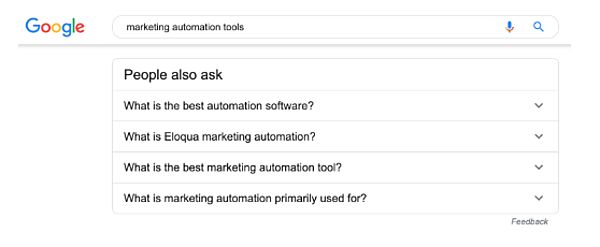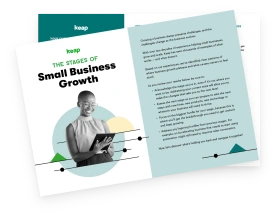Cold calling is tough. But data shows that even today—when many marketers believe cold calling to be dead—it’s still more effective than social selling, trade shows, and even email campaigns.
“But it’s not working.”
“I’m wasting my time.”
“People just hang up the phone.”
You’ve probably heard these complaints from other salespeople (or maybe even voiced them yourself). But chances are, if you’re not getting results, it’s not the method at fault. It’s how you’re using it.
In other words? You’re doing it wrong.
Here are 10 of the biggest cold calling mistakes to stop making, so you can start getting results:
1. Not knowing your product inside out
We buy from people we like and trust. But how can you expect to earn people’s trust if you can’t answer their questions?
Before you pick up the phone, learn everything you can about the product or service you’re selling. For bonus points, research common questions asked about your product (or a similar product) so that you can be one step ahead of prospects at all times.
You can do this using keyword research tools. You can also look at the “people also ask” section of Google’s search results.

2. Talking to the wrong people
A trap encountered by many inexperienced cold callers is to become so excited when someone—anyone—starts listening to them, that they waste time talking to someone who won’t buy (or can’t buy).
Qualify the person on the phone before you start your pitch. Check that they’re a decision-maker and in a position to buy. If they’re not, find out who is.
That said, don’t write off whoever picks up the phone just because they can’t buy. You still need to build rapport. You still need them to like you. If they do, they’re more likely to put you in touch with someone that can buy.
Spread the word about Keap and earn cash. 💲 💲 💲 For everyone you successfully refer to Keap and Infusionsoft by Keap we’ll pay $100! Get started below👇 https://t.co/4UEpIADu44 pic.twitter.com/nr9kBhf8QP
— Keap (@KeapGrowing) March 3, 2020
3. Waiting too long to ask a question
Start a cold call with a 45-second speech and you're doomed to fail. Your prospect will have zoned out long before you stop talking (and that’s assuming they haven’t hung up the phone).
Keep your introduction short and sweet and engage prospects as soon as possible by asking a question. This could be product-specific, or more general—something like "what do you think so far?" Just make sure it’s an open-ended question...
4. Asking closed questions
Closed questions (those that can be answered with a simple "yes" or "no") give prospects an easy way out of a call. Closed questions also make life more difficult for you, the caller, since you have to work harder to keep the conversation going.
Open-ended questions (those that can't be answered with a simple "yes" or "no") do the reverse, because they make it harder for prospects to abruptly end a call and easier to get them engaged. That’s how you progress and close calls.
5. Not listening
Most of us could do with sharpening our listening skills, but few of us will benefit more from this advice than sales reps.
Often, cold callers are so keen to get their point across that they’ll completely miss what a prospect tells them. Whether they’re asking a question, or just trying to tell you they’re not interested, if you’re not listening, then your prospect’s going to take one thing away from the call—that you don’t care about them or their concerns.
So when a prospect starts talking, do two things: shut up and listen.
6. Trying to close too soon
Closing is an essential part of sales, but knowing how and when to close is key.
It may be tempting to close ASAP so you can wrap up and move onto the next prospect. But asking for too much, too soon, can make prospects feel pressured. The end result? You lose the deal.
7. Sounding too salesy
Have you ever recorded your calls and listened back to them?
Many cold callers don't. That's a big mistake because sounding like you’re selling is pretty much guaranteed to put off prospects.
Record and listen to your calls so you can adjust your tone. Your goal should be to sound like you’re talking to your family or friends—not to a sales prospect. You may even want to record yourself talking to your family, with their permission, of course. You'll be surprised by how different you sound in a normal conversation versus when you’re trying to sell.
8. Sounding too timid
Timid cold callers are easy to talk over and get off the phone. The best cold callers sound strong and confident from the get-go.
Of course, it takes practice to sound confident without sounding pushy or overly dominant. Treat phone calls that don’t convert not as failures, but as practice opportunities—it’ll pay off in the end.
9. Not setting out clear next steps
Instead of saying, "I'll be back in touch shortly" or "I'll send through some literature for you to look at," set out a clear next step.
For example, after wrapping up a successful call, immediately send out a calendar invite that sets in stone the next time you’ll talk. A sales automation tool like Keap can help make this process easier for you. Your prospect is more likely to say yes to the next step when your conversation is still fresh in their mind.
10. Celebrating after a good call
It's easy to think you’ve won a client over after a good call, and it’s incredibly tempting to hit the brakes and congratulate yourself on a job well done. But this is a major cold calling mistake.
Celebrate only when the deal is done, and the contract is signed.
Regardless of how each call goes, keep picking up the phone and dialing. Treat every call—good or bad—as practice. In time, you’ll learn what it takes to close deals so that you can refine your cold calling approach and make more sales.
About the author
Sujan Patel is a partner at Ramp Ventures and co-founder of Mailshake. He has over 15 years of marketing experience and has led the digital marketing strategy for companies like Salesforce, Mint, Intuit and many other Fortune 500 caliber companies.


